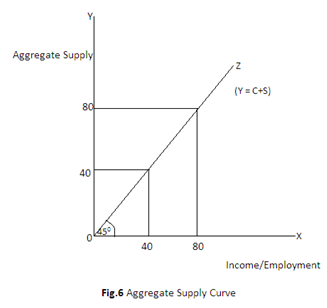Aggregate Supply Price
Aggregate supply refers to the flow of goods and services in an economy during a given period of time. Aggregate supply price is, therefore, the money value of goods and services produced in an economy. According to Stonier and Hague, “Aggregate supply price is the total amount of money which all the entrepreneurs in the economy taken together must expect to receive from the sale of the output produced by employing a given volume of labour.” This otherwise means the cost of producing output consistent with that volume of employment. Total cost of producing output consistent with that volume of employment. Total cost of production is the sum of remuneration payable to the factor of production including normal profit to the entrepreneur. That means the money value of remunerations received by the factors of production in the form of wage, interest, rent and profit in exchange of their services rendered in the production process is called the aggregate supply price or the net national income. There seems to be a direct relation between the aggregate supply price and the volume of employment of labour. As employment increases, aggregate supply price also increase4s and vice versa, For the sake of simplicity, let us assume that the aggregate supply price represents a proportional relationship and it may be represented in a straight line starting from the origin with 450 to the X-axis. This straight line indicates aggregate cost of production various levels of output as employment in X-axis increases.
In the diagram, X-axis represents employment/income and Y-axis represents aggregate supply. As employment in the X-axis increases, aggregate supply also increases proportionately. This is represented by the OZ straight line starting from the origin with 450 the X-axis. This line also indicates total income at various levels of employment. The greater part of this income is spent on consumption and smaller part is devoted to savings. In the shot-run, supply conditions are assumed to be relatively stable. Therefore aggregate demand plays the most important role in the determination of income and employment.

